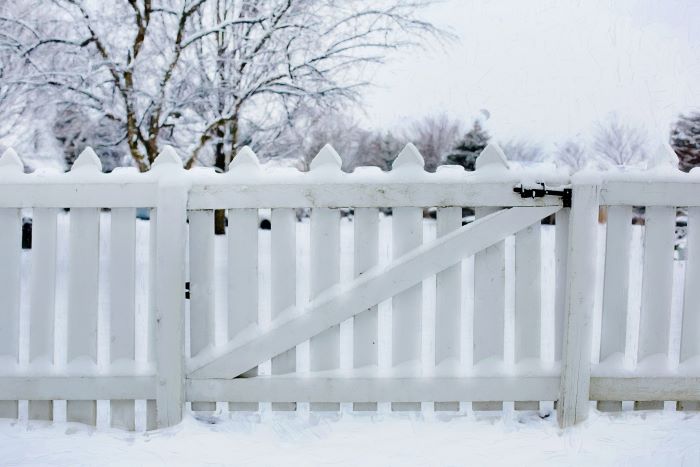
How to Put Fence Posts in Frozen Ground
If you live in certain parts of the world, you know that at some point, winter is going to hit, it’s going to snow, and the ground will freeze.
However, that doesn’t mean you will never need to have a fence installed in the winter. So if you’re wondering how to put fence posts in frozen ground, read on and find out!
Why Is Installing Fence Posts in Frozen Ground a Problem?
Before we get to how to put fence posts in frozen ground, the first thing you need to know is why it’s generally not only more difficult but also not always the best choice.
The most obvious reason is that when the ground freezes, it’s really hard to dig holes or even pound posts, and if you have a very deep frost line, it only gets harder. But there are other reasons.
One is frost heave. If you have expansive soil, it will actually expand in the winter, because when water freezes (unlike most things!) it expands rather than contracting. So the ground level will actually change based on the seasons, and a fence you install level in the winter might be very out of alignment when the ground freezes.
Then there’s the problem of pouring concrete in the cold. concrete has a long, slow hardening process that takes weeks. It’s a chemical process that requires water, but when it’s very cold out, the water in your concrete will freeze before your concrete can finish the process. This interrupts the chemical process and actually prevents the concrete from hardening.
Heating and Hoarding
If you are wondering how to put fence posts in frozen ground using concrete, the solution is a system called heating and hoarding.
Basically, you use special heaters to heat the ground along your fence line and hoarding to create a snug, enclosed space for the heaters to do their work.
Since concrete needs at least 7 days to reach proper hardness, this can be very expensive though, so it’s usually not used for anything other than the most urgent fence installs.
Pounding Fence Posts into Frozen Ground
If you want to avoid using concrete to install fence posts in frozen ground, but you still need to figure out how to put fence posts in frozen ground in general, the best option might be to pound your posts.
A good quality, commercial-grade post pounder can pound or vibrate posts into frozen ground, even if it takes a little longer. However, it’s very important to note that when you do pound fence posts into frozen ground, the top of the post is likely to expand or “mushroom” because of the force of the blows and the resistance from the ground.
One way around this is to use a longer post, so you can cut the top off if it deforms, but the other, better solution is to use a heavier-duty fence post like Schedule 40, which won’t do this even when you’re pounding into hard frozen ground.
Other Reasons Winter Fence Installation Is Harder
As you can see, there are some solutions to the question of how to put fence posts in frozen ground, but they are always more difficult and expensive than installing the same fence in spring, summer, or fall.
There are other reasons why you should think twice about winter fence installation in general, and those include the speed of installation. When fence installers are working in very cold conditions, they have to wear protective gear including thick gloves, which lowers dexterity and makes the actual installation process take longer.
If the weather gets very bad, fence crews might not be able to work at all, so if you are planning a winter fence installation, allow extra time to get the job done.
It’s certainly not impossible to install a fence in the winter. But if it can wait for the ground to thaw and the mercury to rise, it’s often a good idea to put it off for a few months.


